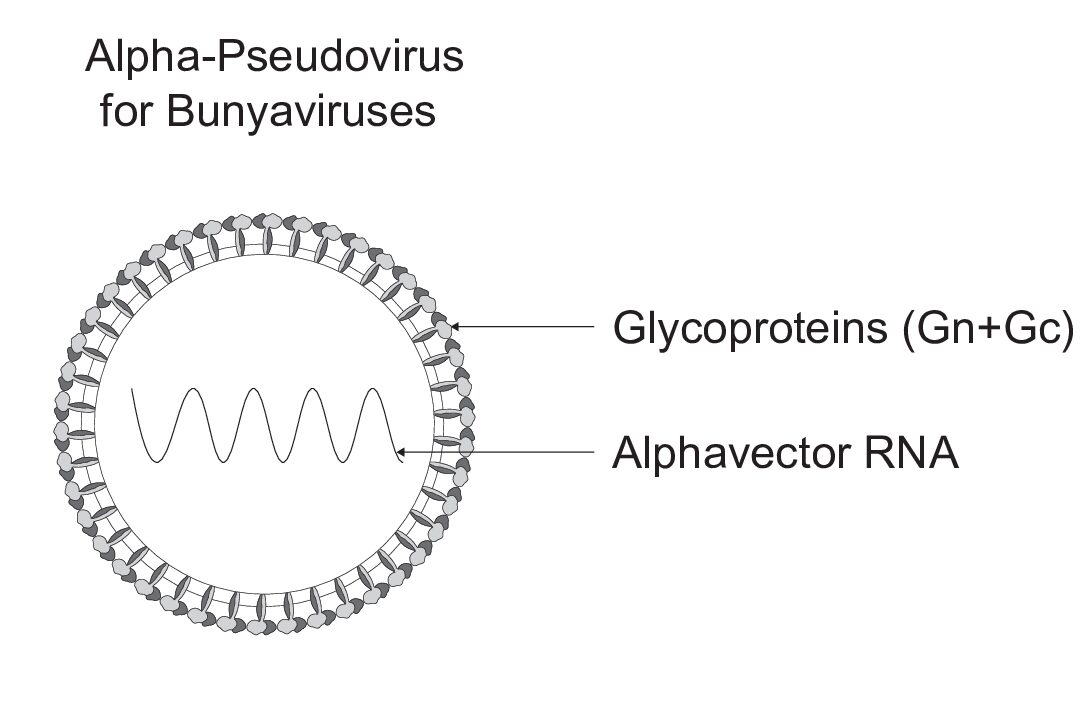Product Description
Product Description
Bunyaviral Protein Expression Vectors
Bunyaviruses include Crimean-Congo hemorrhagic fever (CCHF) and Rift Valley Fever (RVF) viruses. The Crimean-Congo hemorrhagic fever viral protein expression vectors are derived from NCBI reference sequences NC_005303.1 (S genome), NC_005300.2 (M genome), and NC_005301.3 (L genome). Rift Valley Fever (RVF) viral protein expression vectors are based on the BJ01 Isolate with the following reference sequences KX632068.1 (S genome), KX632067.1 (M genome), and KX632066.1 (L genome). All of the expression vectors are codon optimized for mammalian cell expression. Choose to add a GFP or his tag to the C terminal end of any protein. A CMV promoter is used for mammalian cell expression and the backbone contains a selection marker for Geneticin (G418). All non-tagged glycoprotein expression vectors have been functionally validated using pseudotyped viral particles.
Background:
Bunyaviridae is a family of enveloped RNA viruses transmitted by ticks, mosquitoes, and livestock animals. They are responsible for various human and animal diseases, including Crimean-Congo hemorrhagic fever and Rift Valley Fever. While CCHF virus infection causes severe viral hemorrhagic fever outbreaks, with a case fatality rate of up to 40%, RVF can result in a 50% chance of death with severe symptoms such as loss of sight, severe headaches and confusion, and bleeding together with liver problems.
Bunyaviruses are single-stranded negative-sense RNA viruses with 3-segmented genomes: small (S), medium (M), and large (L). The 3-segmented genomes encode viral nucleocapsid protein (NP) involved in transcription and replication, glycoprotein precursor generating two structural membrane proteins (Gc and Gn) and nonstructural proteins (GP38 and NSm), and RNA-dependent RNA polymerase (RdRp) proteins, respectively. Bunyaviruses enter the host cell via receptor-mediated endocytosis through the surface glycoprotein Gc, which is responsible for binding to the cellular receptors. Upon attachment, Gc responds to the reduced pH of endocytic compartments with a conformational change that results in a fusion loop, allowing it to insert into the endosomal membrane. Gc then folds back on itself, forcing the cell membrane (held by the fusion loop) and the viral membrane (held by a trans-membrane anchor) against each other, resulting in fusion and releasing the viral genome into the cytoplasm. Some of the receptors facilitating the viral entry that have been described include clathrin-dependent endocytosis, 3 integrins, nucleolin, and DC-SIGN (a C-type lectin restricted to interstitial dendric cells and certain tissue macrophages).
Documentation
Documentation
 Protein Expression Vectors – MSDS
Protein Expression Vectors – MSDS
Example plasmid map
Example plasmid map
Example plasmid map:

Don’t See the specific protein of interest? Email: info@virongy.com to ask us about a custom expression vector order.
Additional attachments:
References
References
Related links:
- Zivcec M, Scholte FE, Spiropoulou CF, Spengler JR, Bergeron É. Molecular Insights into Crimean-Congo Hemorrhagic Fever Virus. Viruses. 2016 Apr 21;8(4):106. doi: 10.3390/v8040106. PMID: 27110812; PMCID: PMC4848600.
- Dessau M, Modis Y. Crystal structure of glycoprotein C from Rift Valley fever virus. Proc Natl Acad Sci U S A. 2013 Jan 29;110(5):1696-701. doi: 10.1073/pnas.1217780110. Epub 2013 Jan 14. PMID: 23319635; PMCID: PMC3562824.



